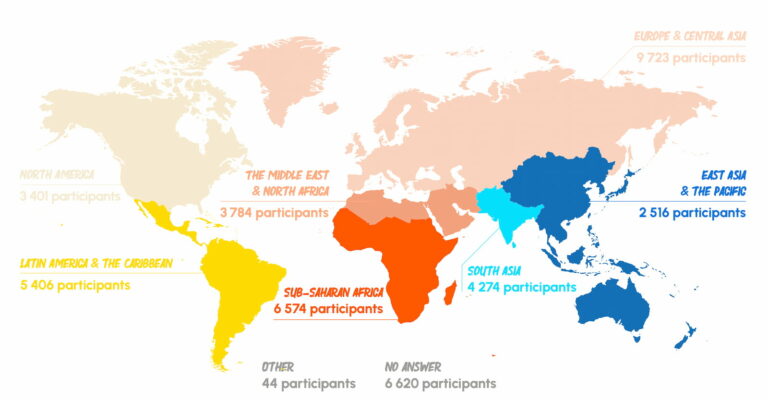Choose your language
Our Results
Amplifying the voices of the youth: they spoke up, we listened.
Navigate in our Digital Report
Calling all avid pickers who’d rather soar through a forest of pages than trudge through them! Our Digital Report is your speedy ticket to explore and enjoy.
Discover our Questions Boxes
Get ready to make a splash in the data pool! Take a peek at the global ideas, regional gems and the juiciest insights.
Explore our Libraries
Tune in, watch and listen first hand the vibrant thoughts of young people.
Read our Global Report
Here it is, the Global Report that’s got it all! It’s not just a simple rundown of our results; it’s the whole thrilling story of Youth Talks.
Dive into the Methodology Note
The YT Methodological Note is the scientific guarantee of the project. This is the reference if you are a researcher or want to know more about Youth Talks behind the scenes.
As a preamble to a long-term project over the coming months, these documents aim to provide a first descriptive overview of the data. Its richness will require experts from different disciplines and around the world to be brought together to carry out a full, in-depth analysis of the Youth Talks results.
The Youth Talks consultation relies on a unique and innovative methodology. Therefore, its results cannot be interpreted as those of traditional surveys.
Since each participant could give several answers per question, the cluster percentages relate to the weight given to each idea across all the people who answered the question analyzed.
Furthermore, the questions are open-ended and have been deliberately formulated very broadly. This therefore produces a very significant diversity of possible responses and themes addressed. Thus, if a macro-cluster is shared by 10% of respondents, its weight is considered to be particularly significant and important. Sub-clusters are even more finely detailed and therefore considered to be significant if attached to over three percent of participants, depending on the question.
The scale of the consultation means that very few ideas do not surface at all: rather than noting whether or not they are present in the corpus of responses, it is much more valuable to observe the relative weight of each idea in comparison with others, and note any variations appearing according to participant segment.
Division into geographical zones


In this analysis of the data, the world is divided according to the geographical zones established by the World Bank : North America, Latin America and the Caribbean, Europe and Central Asia, Middle East and North Africa, Sub-Saharan Africa, East Asia and the Pacific and South Asia.
This classification into seven clearly defined regions provides a good balance between accuracy and simplicity. It is widely recognized and used on an international scale in both research and public policy environments. By conforming to this established norm, therefore, our results will be more easily understood and interpreted by a diverse audience, including researchers, decision-makers and our international partners.
The World Bank classification is based on criteria related to geography and income, which makes it particularly relevant to the socioeconomic questions explored in the context of Youth Talks. This approach means the results can be presented in a more contextualized way, thus revealing potential regional nuances in young people’s perspectives and priorities.

